Hurricane, Lancaster, Mosquito, Spitfire, Moth—all iconic British designed and built aircraft, and all from an era when such design and construction skills burgeoned. Postwar, there has been very little to match these, as Great Britain’s general aviation aircraft industry swelled, then imploded. This was no more true than in the light aircraft industry, including homebuilt aircraft and kit designs. Then in 2003 The Light Aircraft Company (TLAC) was founded in Norfolk, England by Paul Hendry-Smith and Ivor Smith.
Fast forward to June 2015 and I’m driving down the verdant, leafy lanes of the rural county of Norfolk, driving because thunderstorms and heavy rain are raking the skies. I’m looking for TLAC’s headquarters and factory at the quaintly named Little Snoring airfield. I’m also a stone’s throw away from Her Majesty The Queen’s country residence at Sandringham. I spy a former WW-II control tower and a windsock—I’ve arrived at Little Snoring airfield, the shadows and echoes of war-time DH Mosquitos long gone, but a large, modern building with a bustle of aviation activity is in front of me. I have arrived at the focus of the current revival of Great Britain’s light aircraft manufacturing industry, TLAC.
The Company
In addition to selling kits, TLAC also builds complete aircraft, a new departure for this type of aircraft in Great Britain. Paul is formally trained as a production engineer and joined the family chemical production company in the early 1980s until he sold up to pursue his flying and aircraft-building hobby on a commercial basis. Paul brings his huge professional, industrial, and production experience to TLAC, and although from the outside it may appear as a small cottage industry, from the inside it is 21st century, state-of-the art, with its directors knowing the traumas of running a profitable and successful business.
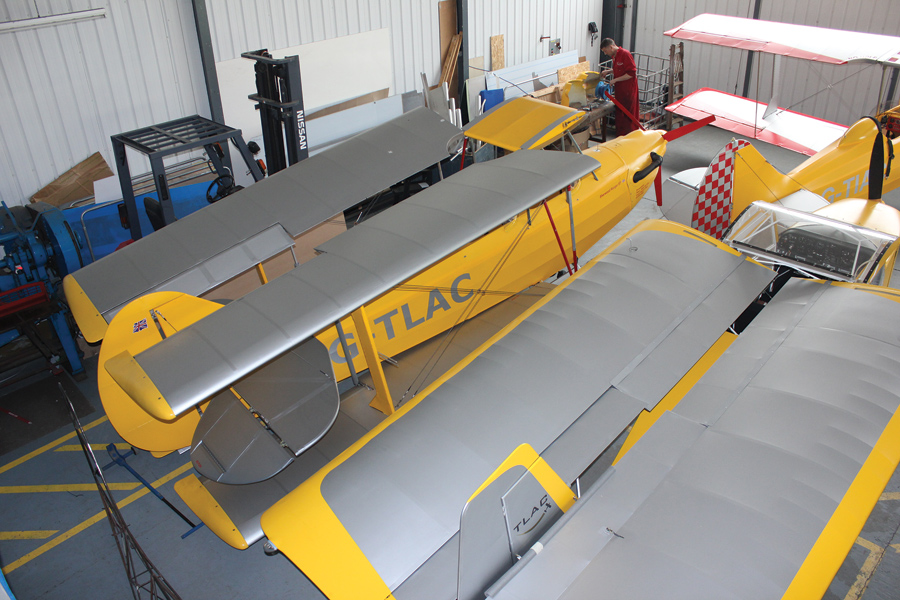
Looking down on TLAC’s lower floor demonstrates the benefit of folding wings on all three of their models in order to maximize hangar floor space.
Throughout my visit to TLAC, I am continually reminded that quality manufacturing is important. Many processes and components could be done more easily and cheaply, but the TLAC ethic is quality—and quality never goes out of fashion. They are now approved by the CAA in Part M, Sub part F, G, and I (Maintenance) up to 5.7 tons for fixed- and rotary-wing aircraft, and have recently been awarded A.8-1 and A.8-9 approvals, which enable them to manufacture light aircraft. They also have “DoA” and “PoA,” which are design and production approvals with flight test authority.
Besides the swarm of Pipers and Cessnas at TLAC for maintenance, as well as being the U.K. agency for the Oratex fabric covering system, their current portfolio includes three basic aircraft designs, all of which are available in kit form, or as factory-complete aircraft:
- Sherwood Ranger—a tandem, two-seat biplane (formerly the TCD Sherwood Ranger).
- Sherwood Scout—a side-by-side, two-place high-wing (formerly the Escapade).
- Sherwood KUB—a small, single-seat SSDR (single-seat deregulated microlight) that fits the U.K. sub-660 pounds (300 kilograms) maximum takeoff weight category.
All three aircraft have convoluted histories, but all are now under one stable roof with common TLAC production methods and integrity. One of the main features they have in common is wing folding. Paul believes that with the ever-increasing cost of hangars, an aircraft with easily folded wings—with no control disconnection—will appeal to a large number of pilots.
Touring the Factory
My visit starts on the top floor of three that comprise TLAC’s facility at Little Snoring. The office here has a staff of three, plus Paul. Like any modern design center, it has large computer screens that display the end product of the Solid Works CAD software they use for designing structures, assemblies, and components, from full airframes down to simple brackets. Also used is Pro-Engineer software, which does the basic stress analysis work. TLAC has stripped their three designs back to basics. They keep the “good” where it exists, but replace other parts with new and improved designs as they develop them to meet the stringent U.K. requirements for kit aircraft.
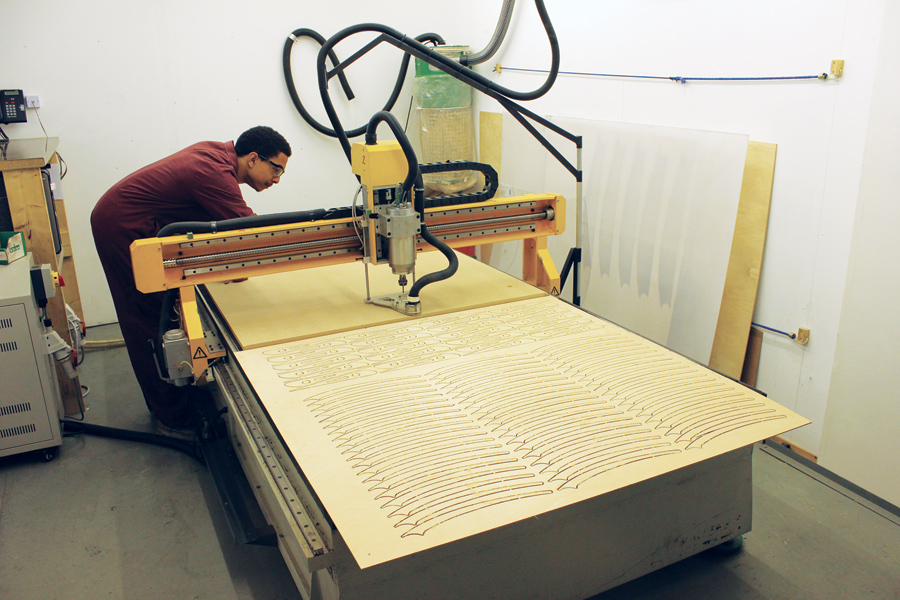
A sheet of GL.1 ply emerges from the three-axis 8×4-foot CNC router machine used for profile cutting. Here a sheet of Sherwood Ranger fore-ribs emerges.
Most of the rest of the top floor is taken up with Sherwood Ranger production, with two of five fabricators working away here. I scratch my head and wonder whether this is a Colditz Cock scenario, with Rangers being launched into the air from the dizzy heights of the factory top floor roof. “No,” says Paul, “look at the area in the center.” Glancing in that direction, I see an innovative lift that takes complete aircraft and components down to the intermediate and ground floors, aircraft carrier style.
To one side of the top floor is the bonded store, of which Paul is understandably proud. In here is over $150,000 (100,000) worth of aircraft components, most of them manufactured by TLAC at Little Snoring. “We draw from here for factory-complete aircraft manufacturing, or as we compile components for a customer before shipping a kit. We make as many of these components as possible ourselves,” he explains. I spot a stack of wooden ply sheets that have been CNC-routed with the outlines of ribs, fillets, gussets, and other parts. “These are so that the builder just has to ‘pop’ the parts out when they are ready to build. It’s just like the balsa-wood kits we made when we were kids,” Paul tells me. Another large rack of trays has an amazing selection of fasteners, nuts, bolts, etc., most of which are aircraft AN grade, although TLAC use some nice mushroom-head bolts to secure seats; these are metric, as they couldn’t source ones they liked from the AN fastener program.
TLAC has had great difficulty sourcing sufficient quantities of good spruce for rib caps. Apparently most supplies are now being channeled to China. Instead, albeit it ten percent heavier, they now use Douglas fir from Canada, which is 20% stronger than spruce. All the ribs for all three designs are made from GL.1 ply.
There are more composite components in the TLAC designs than in previous manifestations. One excellent improvement is a one-piece composite decking for the entire cockpit area of the Ranger, a great idea to prevent scuffs and damage when getting in and out of the finished aircraft. A fabricator is making a small cut in one of these as I pass him, and I’m gratified to see that he is using a vacuum extraction for the cut fragments and dust, which keeps the aircraft and shop floor spotlessly clean. TLAC subcontracts their composites from a local company whose main business is supplying the motor sport industry—they are beautifully and accurately made.
As we continue through the factory, it’s obvious that TLAC has made a large investment in tooling, CNC machines and jigs. A new CNC tube-profiling machine with lights-out operation had just arrived so that kit production for the Kub and Scout can ramp up on the middle/intermediate floor. A buck (mold) for the new overhead aluminum fuel tank for the Ranger had recently been completed, and the first-off tank is just being final TIG welded, while Paul explains that they no longer use plastic for fuel tanks.
Paul also proudly shows me the three-axis CNC machine used for making engine mount components, the jig for producing Kub fuselages, and the three-axis 8×4-foot CNC router they use for profile cutting wooden ribs on the ply sheets. He also notes that TLAC has moved to a new cold-weld MIG weld system throughout their factory for steel components, instead of the TIG weld most people use. “MIG doesn’t produce as much heat in the tubes as TIG. As a result, the fusion in the welded joint is stronger, and the strength of the original tube is retained. The MIG system doesn’t take any longer to complete either,” says Paul.
Our next stop, the hangar on the ground floor, is where the test flight examples of the three current TLAC models are kept. It was also busy. I’m shown the significant changes to the Scout design that TLAC has made to give better handling and improve the strength of the landing gear. There’s an option for double- or single-brake calipers, and the tire size can be increased to 26 inches, if required. The test-flight aircraft also has enlarged rear control surfaces compared to earlier examples, and Paul says the Scout’s new flaps produce more lift. The cockpit is also slightly wider, four inches more than a Cessna 172. All of this gives a comfortable cruise with precise controls and none of the directional instability experienced in similar kit aircraft types.
The TLAC Kub prototype is also here, a work in progress, previously with a Hirth F33 engine, but now being retrofitted with a new Italian-designed engine, a 36.5-hp two-stroke Polini, which is very light and comes with dual ignition. It has already been used in several single-seat aircraft, including the Belite, and has its origins in the Italian motor scooter industry. Paul is hopeful that with the Polini, the lack-luster performance of the Hirth-powered Kub will be much improved.
That brings us to the Sherwood Ranger, which is TLAC’s current main focus. Like the Scout and Kub, the Ranger has been greatly improved since the design was first introduced (see sidebar below, “An Airplane Named After a Pub”).
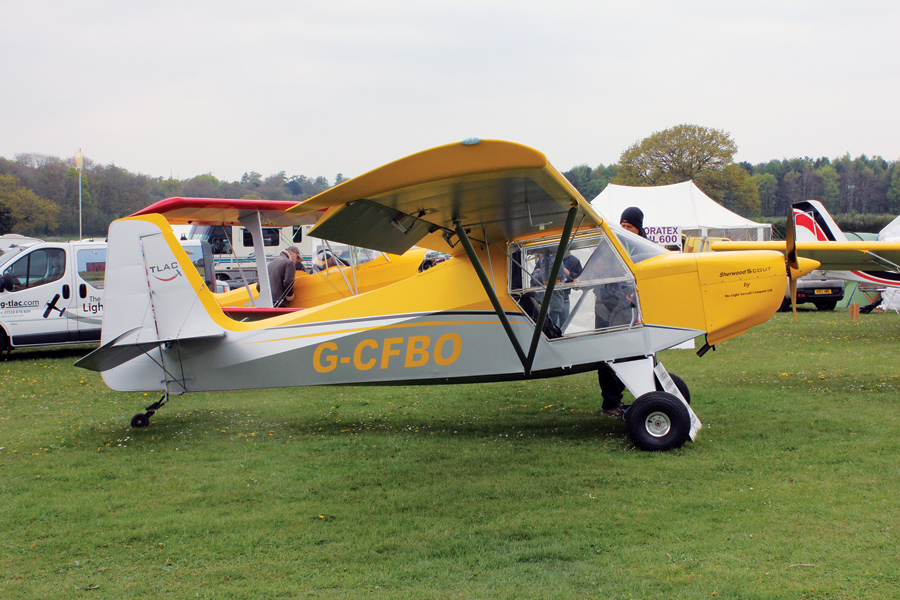
Note the higher vertical tail of the newly re-designed TLAC Scout, shown here at the Popham Microlight Show in the U.K.
A Classic Biplane
Since acquiring the rights to the Sherwood Ranger, TLAC has sold 52 examples. Five of them are factory-complete aircraft, and the remainder are in kit form. There are examples flying in most European countries, Japan, Thailand, South Africa, and three or four are under construction in the USA. One builder is actually building his Ranger kit in the TLAC factory, and Paul told me they are considering that option as a future development of their business.
Four different models of the Sherwood Ranger are available:
- ST—conforms to U.K. microlight regulations not exceeding 990 pounds/450 kilograms maximum takeoff weight.
- XP—identical to the ST, but a “Group A” aircraft with a 31.5-inch/800-millimeter shorter wingspan.
- XP Aero—a stronger version of the XP cleared for single-pilot aerobatics.
- DST—Includes a ballistic recovery ‘chute and a higher 472-kilograms/ 1038-pounds maximum takeoff weight.
TLAC favors using the Belgian D-Motor, which makes the empty weight with basic equipment installed about 540 pounds (245 kilograms). Other engine options include the Rotax 582, which is lighter at 474 pounds (215 kilograms) and the Jabiru 2200, which is heavier at 572 pounds (260 kilograms).
Besides providing the ability to fit a wide range of engines, TLAC has improved handling in the flight controls, developed a different wing assembly, and made folding wings standard. They’ve also incorporated a much higher standard of machined components and made structural improvements by using a better/stronger gauge of steel tubing: L113 aluminum seamless drawn.
There are several kit options for the Sherwood Ranger, which means that customers don’t have to invest heavily in the complete kit at the outset. As with many kit manufacturers, TLAC sells a tail kit for builders to cut their teeth on, followed by a “basic” firewall rearward kit or a “fast-build” fuselage kit. And finally, there’s a “fast-build” wing kit.
Ranger Builders and Pilots
There are about 17 examples of the Sherwood Ranger currently flying on a regular basis in Great Britain. One of the first to fly, built by Ben Chester-Master in 2000 with a Rotax 582 engine, has been sold in Italy. Early builders all talk of the inevitable difficulties with kit supplies of these first examples, but all say they are glad they persevered. I spoke to Kevin Crumplin, who has built two Rangers, an early example supplied by Russell Light, and a more recent TLAC kit. He reluctantly sold both to concentrate on restoring and flying DH Tiger Moths. “The Sherwood Ranger is a brilliant little airplane,” Kevin told me, “a delight to fly and because of this, I kept the second example—fitted with a Jabiru 2200—for a long time before reluctantly selling it to Owen Pope in 2014.”
Owen Pope’s Sherwood Ranger was having its annual Permit to Fly renewal when I caught up with him at his Henstridge, Somerset base. He was taking the opportunity to change the previous finer pitch (39) two-blade propeller, which only allows a maximum 2400 rpm with a Jabiru 2200 engine, for a coarser pitch (34) Hercules two-blade wooden prop that he is sure will give better performance.
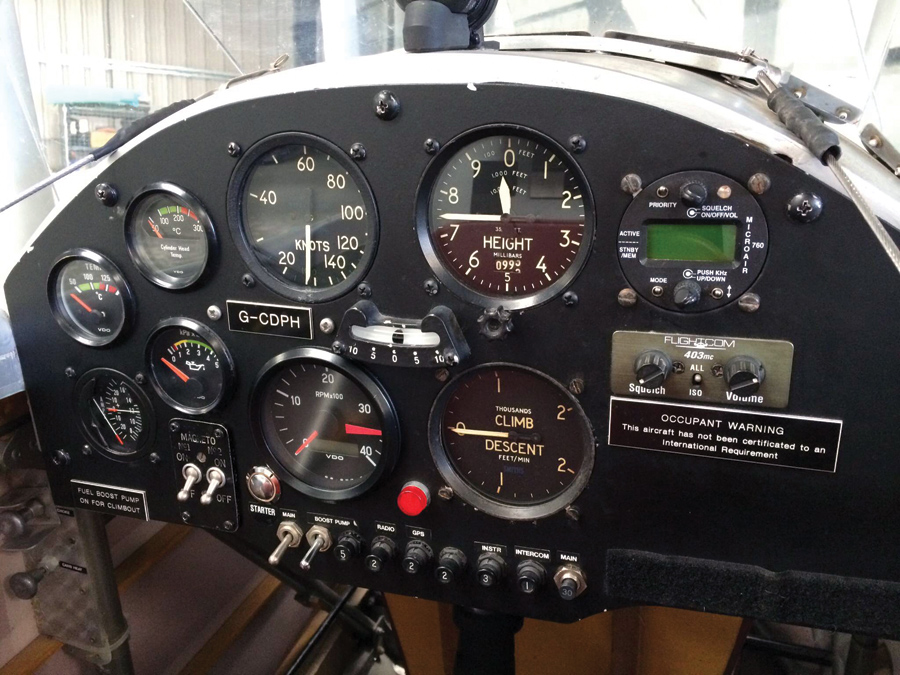
The comprehensive panel fitted to Owen Pope’s Sherwood Ranger gives a “period” look. (Photo by Owen Pope)
Owen only has about 170 hours total time and flew a single-seat Taylor Monoplane before acquiring the Sherwood Ranger. He describes the Ranger as “excellent—very light, responsive and stable, particularly when compared to the somewhat ‘twitchy’ Monoplane. It will take off in no time, and with a 50-knot approach virtually lands itself. However, it’s no good for wheel landings because its light tail has a tendency to bounce, and I’ve learned not to use the brakes until the aircraft is almost stationary. I fly by myself, and there’s plenty of room in the cockpit, even with a big Irvine fleece and leather flying jacket on.”
Another British builder of the TLAC Sherwood Ranger is heating and ventilation engineer Danny Baker, who has been a Private Pilot for many years, but wanted something different. The Ranger is his very first homebuilt project. He completed the TLAC kit in about one year, working weekends and evenings only, which in his own words, “Is not so bad!” Danny wanted an open-cockpit biplane with folding wings, important because he flies from a private airstrip and could easily fold the wings, load the aircraft onto a trailer and bring it home during spells of bad weather. The choice of designs is very limited in this category. The Sherwood Ranger ticked these boxes, and since the aircraft has been completed, Danny says it takes about 10 minutes to fold the wings and get the aircraft onto a trailer.
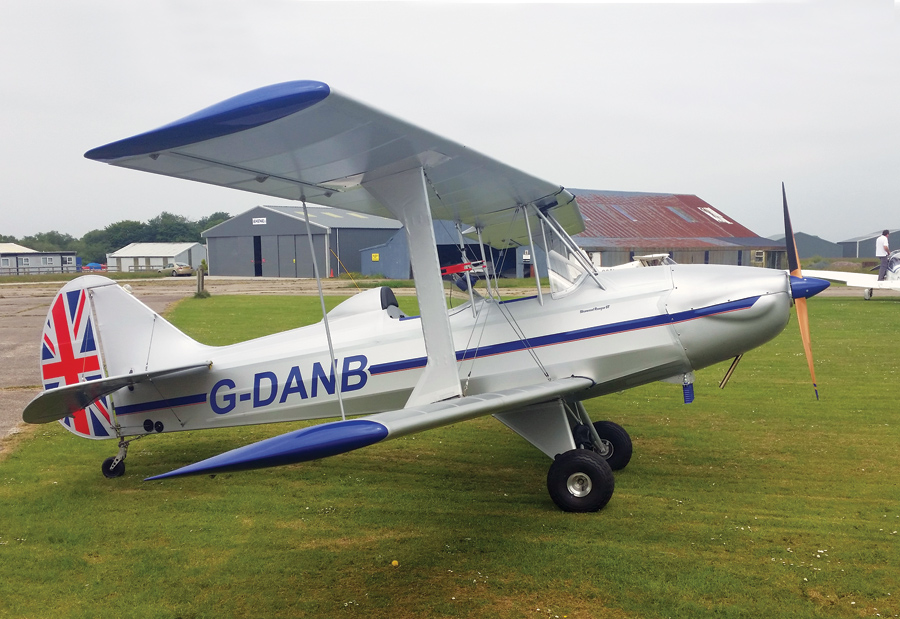
Patriotic tail colours for Danny Baker’s newly completed TLAC Sherwood Ranger. (Photo by Danny Baker)
He also says that the TLAC build manuals are very comprehensive, with TLAC printing and issuing all the drawings as large format ones. The kit comes complete with everything to build the airframe, but you then have to buy the options such as cowlings, coverings, engine, instruments, etc. After building his Sherwood Ranger Danny says, “I can see why TLAC does this as there are so many options, it would be impossible for them to supply everything. Also, the way the aircraft is designed means that the assembly process is simple and standard. And once you get used to TLAC’s build methodology, it is repeated throughout the aircraft, and you’re then on a roll.” He praises Paul and his staff for their helpfulness. “You can ring them any time with any question and nothing is too much trouble,” he says.
Registered G-DANB, the first flight of Danny’s Sherwood Ranger was for 30 minutes on June 10, 2015. He says the aircraft handling is excellent, and all he had to do was tweak the rudder slightly to overcome a need for continuous right rudder. Once a trimmer was installed, this was rectified. Paul told Danny, “It should fly straight out of the box,” and Danny confirms that it did. Although not as fast as other aircraft he’s used to, when he lands after each flight, he has a huge grin on his face—and in the end, that’s what the Sherwood Ranger is really all about.
For more information visit www.g-tlac.comor call +44 (0)1328 878809.


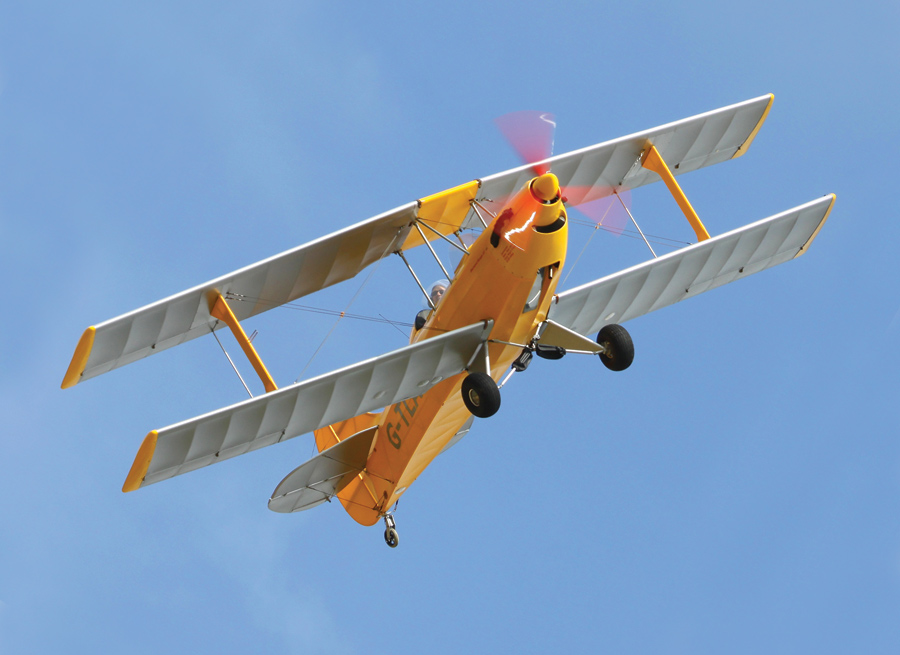
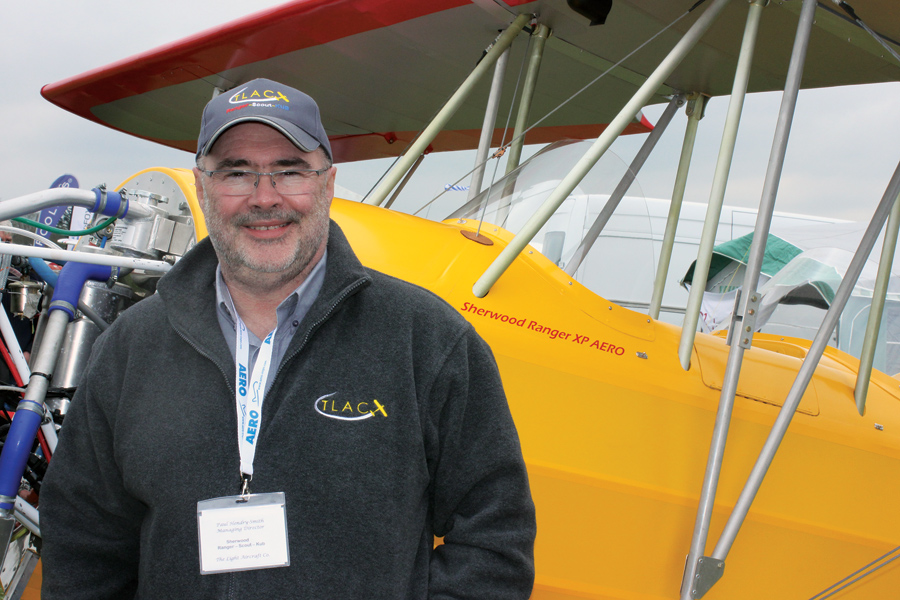
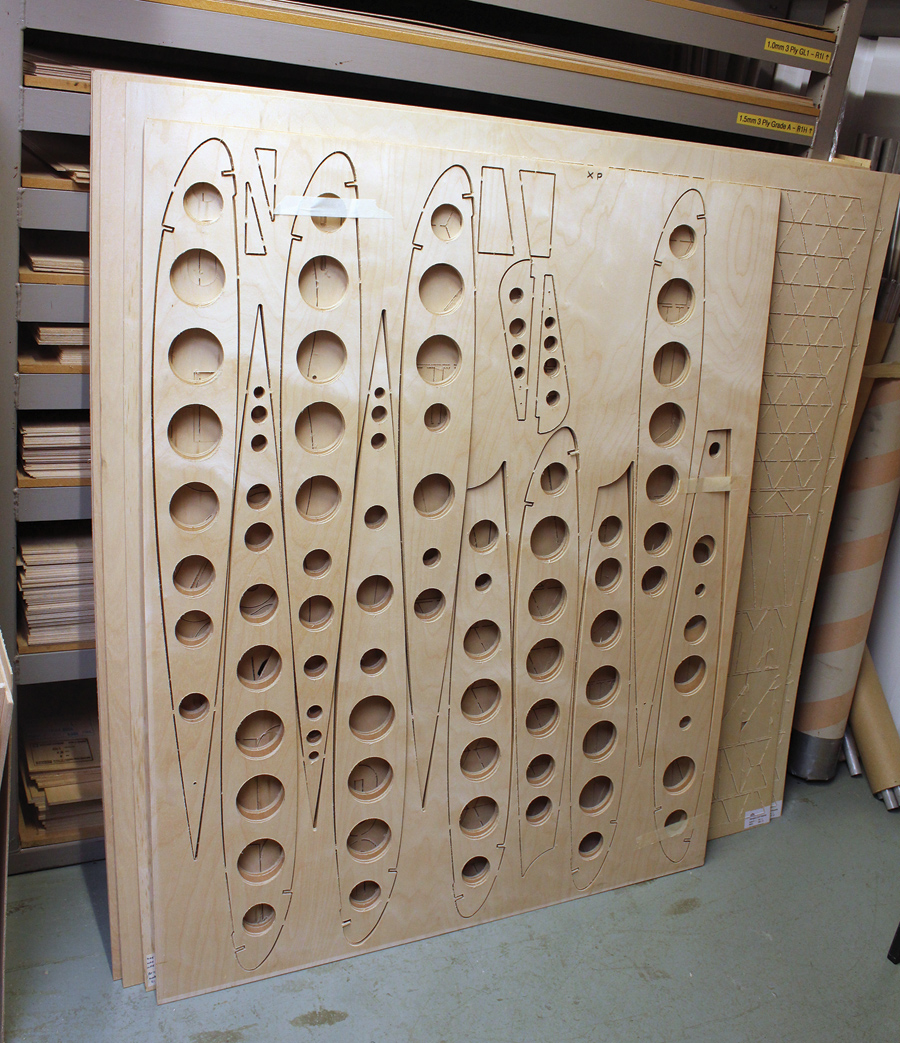
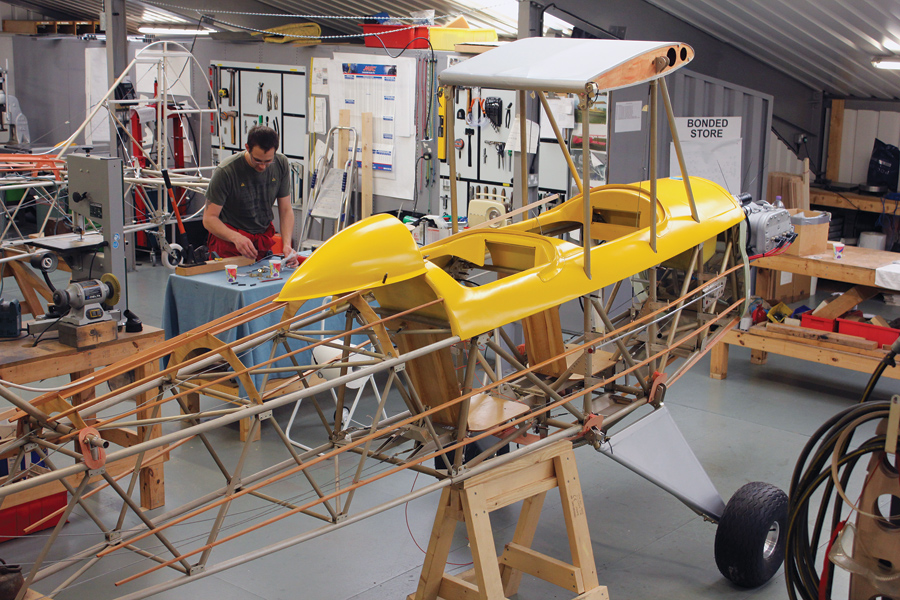
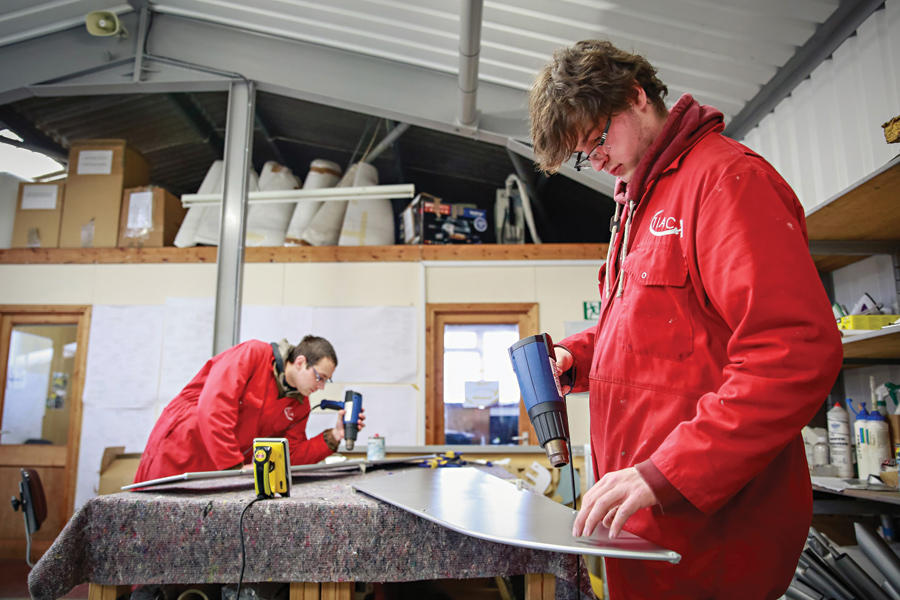

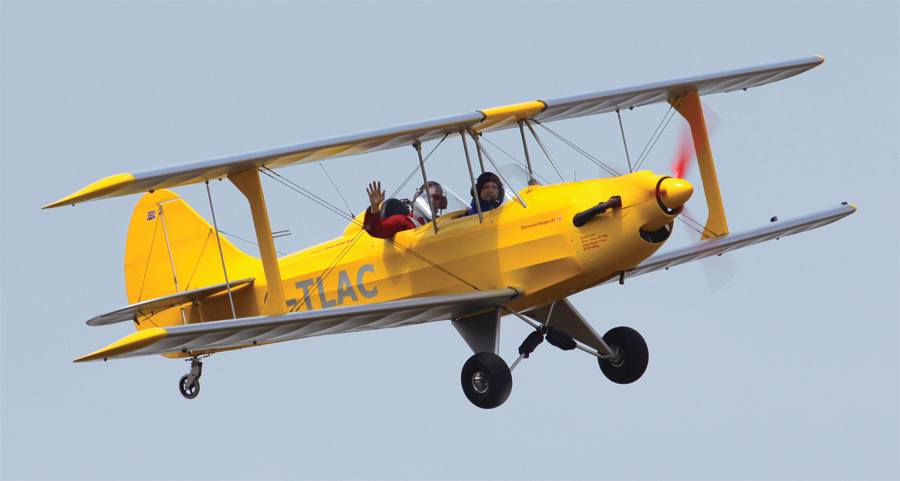
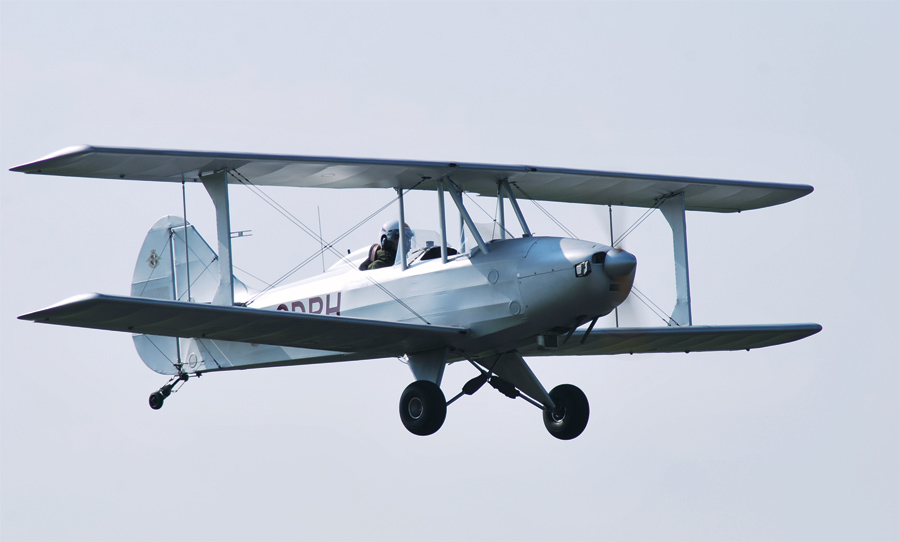
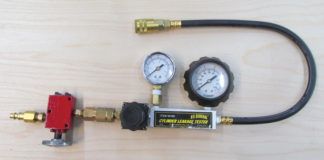
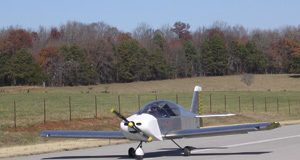
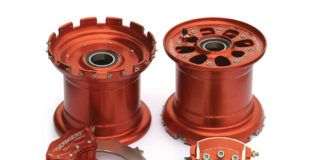
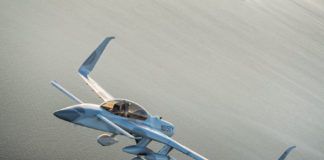
I became interested – no, captivated, by the Sherwood Ranger a few years back but never took the steps to order a kit. I regret that now. It’s a delightful airplane in appearance and a perfect first-time build. I’d be willing to bet this article in Kitplanes will find more Sherwood Ranger kits on their way to the States.